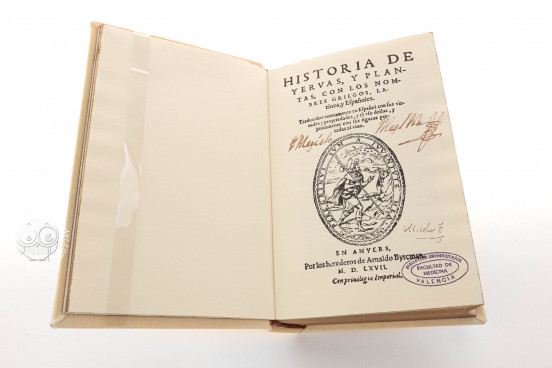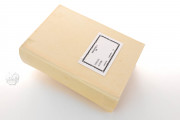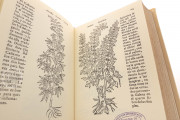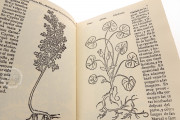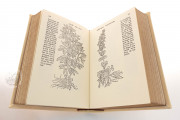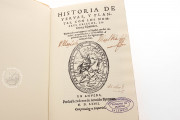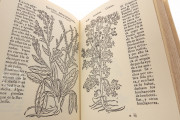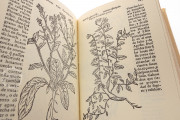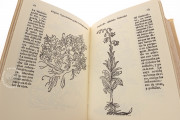The Historia de Yervas y Plantas was printed in Antwerp in 1557 by Jean de Laet. The version of the book held in the Biblioteca Historicomédica of Valencia offers an important testimony to censorship in the time of the Spanish Inquisition, being, as it is, a censored version of a Spanish translation of Leonhart Fuchs's Latin-language masterwork of botany, De historia stirpium. It features 520 woodcuts of the plants discussed in the text.
Fuchs’s De historia stirpium was originally published in Basel in 1542. The great herbal quickly became Europe’s authoritative botanical reference: The text went through thirty-nine printings in Fuchs’s lifetime in Latin and in vernacular languages—including Dutch, French, and German. Juan de Jarava translated the landmark work from its abridged Latin version into Spanish, which resulted in the 1557 printing (mistakenly given as 1567 on the title page).
A New Standard of Botanical Illustration
Perhaps more than its commentary on the nutritive and medicinal properties of the plants included, the grand illustrations of the De historia stirpium secured Fuchs’s legacy in botanical and medical studies. Fuchs considered the accompanying images unconditionally crucial to the work and not only credited the artists in the preface to the original edition but also included an image to a group portrait of the three people involved in creating the book's images. Albrecht Meyer is depicted drawing from the direct observation of nature. Also included are Heinrich Füllmaurer, who transferred Meyer’s sketches to woodblocks, and Veit Rudolf Speckle, who then cut the blocks.
A New Standard of Comprehensiveness
While the book naturally included plants from Europe and across the Mediterranean, the work is also notable for being the first European publication of plants native to the Americas and otherwise unknown in Europe. While the text of the Valencia copy was printed in Spanish, the image captions often included the Greek and Latin counterparts to the name.
Censorship and the Inquisition
Although the Spanish translation was made in the spirit of the original, it nonetheless was subject to the censorship laws of the Inquisition. Leonhart Fuchs was one of many Protestant authors whose works had been banned. To continue to make this indispensable medical resource available, the Spanish version of the text lacks any mention of Fuchs and also omits the name of the translator Jarava. All mention of the ancient Greek physician Dioscorides and his explanation of the abortifacient properties of the cyclamen were also expunged.
We have 1 facsimile edition of the manuscript "Historia de Yervas y Plantas": Historia de Yervas, y Plantas, con los Nombres Griegos, Latinos y Españoles facsimile edition, published by Vicent Garcia Editores, 1995
Request Info / Price
